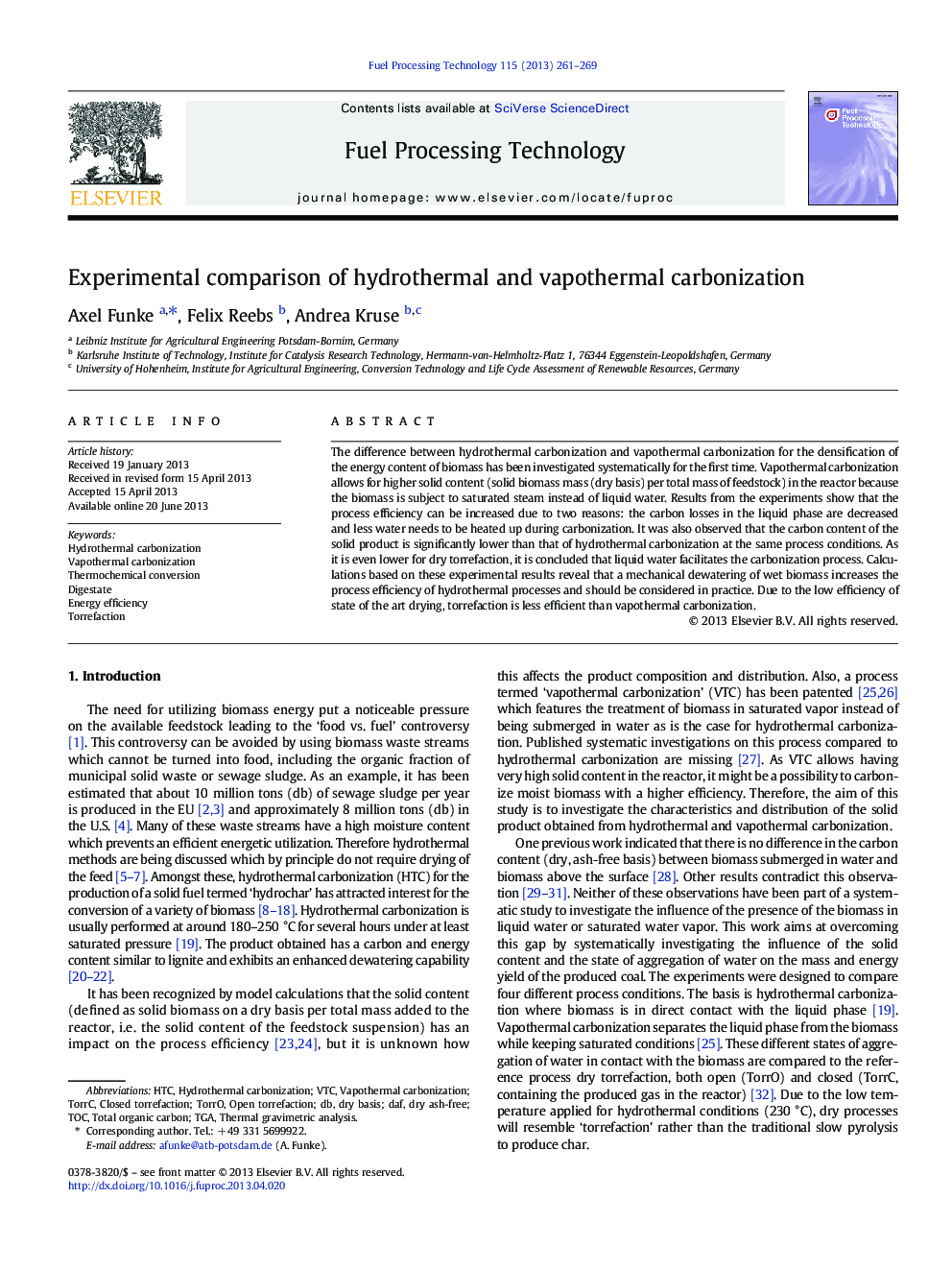| کد مقاله | کد نشریه | سال انتشار | مقاله انگلیسی | نسخه تمام متن |
|---|---|---|---|---|
| 6657472 | 461689 | 2013 | 9 صفحه PDF | دانلود رایگان |
عنوان انگلیسی مقاله ISI
Experimental comparison of hydrothermal and vapothermal carbonization
ترجمه فارسی عنوان
مقایسه تجربی کربنیزاسیون هیدروترمال و واژینال
دانلود مقاله + سفارش ترجمه
دانلود مقاله ISI انگلیسی
رایگان برای ایرانیان
کلمات کلیدی
ترجمه چکیده
برای اولین بار تفاوت بین کربن سازی هیدروترمال و کربن سازی واژینال برای تراکم مقدار انرژی موجود در زیست توده به طور سیستماتیک بررسی شده است. کربنیزاسیون کوره تریاک اجازه می دهد تا محتوای جامد باکتری (توده زیست توده جامد (خشکی) در کل توده مواد اولیه) در راکتور باشد، زیرا زیست توده به جای آب مایع به بخار اشباع می شود. نتایج آزمایشات نشان می دهد که بازدهی فرایند می تواند به دو دلیل افزایش یابد: کاهش تلفات کربن در فاز مایع کاهش می یابد و در طول کربنیزاسیون آب کم می شود. همچنین مشاهده شد که مقدار کربن محصول جامد به طور قابل توجهی پایین تر از کربنیزاسیون هیدروترمال در شرایط مشابه فرایند است. همانطور که حتی برای خنثی کردن خشک کمتر است، نتیجه گیری می شود که آب مایع تسهیل کننده فرایند کربن سازی است. محاسبات بر اساس این نتایج تجربی نشان می دهد که یک تخلیه مکانیکی از زیست توده مرطوب باعث افزایش کارایی فرآیند فرآیندهای هیدروترمال شده و در عمل باید در نظر گرفته شود. با توجه به راندمان پایین خشکی در حالت هنری، ریزش مو کمتر از کربنیزاسیون واژینال کارآمد است.
موضوعات مرتبط
مهندسی و علوم پایه
مهندسی شیمی
مهندسی شیمی (عمومی)
چکیده انگلیسی
The difference between hydrothermal carbonization and vapothermal carbonization for the densification of the energy content of biomass has been investigated systematically for the first time. Vapothermal carbonization allows for higher solid content (solid biomass mass (dry basis) per total mass of feedstock) in the reactor because the biomass is subject to saturated steam instead of liquid water. Results from the experiments show that the process efficiency can be increased due to two reasons: the carbon losses in the liquid phase are decreased and less water needs to be heated up during carbonization. It was also observed that the carbon content of the solid product is significantly lower than that of hydrothermal carbonization at the same process conditions. As it is even lower for dry torrefaction, it is concluded that liquid water facilitates the carbonization process. Calculations based on these experimental results reveal that a mechanical dewatering of wet biomass increases the process efficiency of hydrothermal processes and should be considered in practice. Due to the low efficiency of state of the art drying, torrefaction is less efficient than vapothermal carbonization.
ناشر
Database: Elsevier - ScienceDirect (ساینس دایرکت)
Journal: Fuel Processing Technology - Volume 115, November 2013, Pages 261-269
Journal: Fuel Processing Technology - Volume 115, November 2013, Pages 261-269
نویسندگان
Axel Funke, Felix Reebs, Andrea Kruse,
